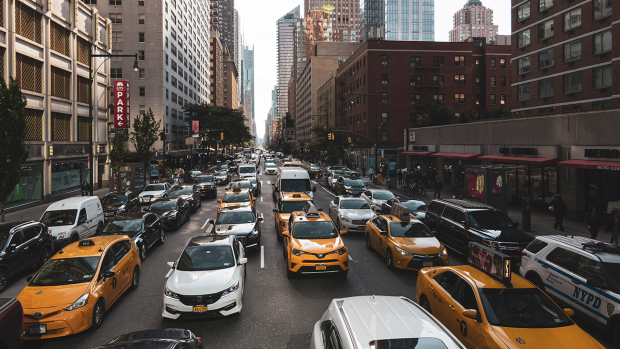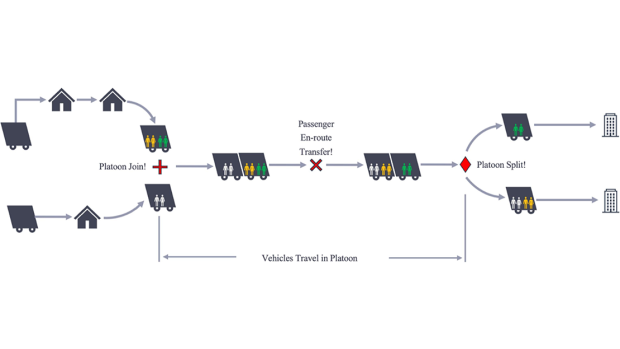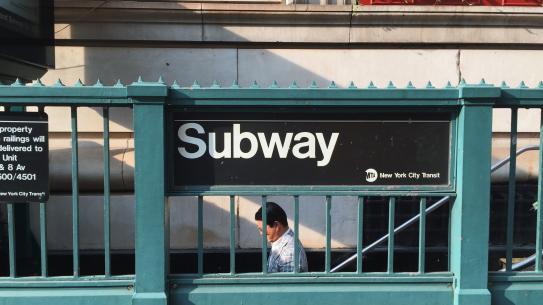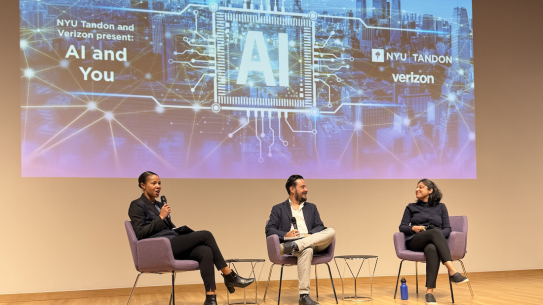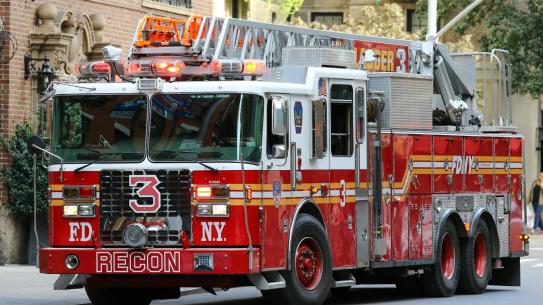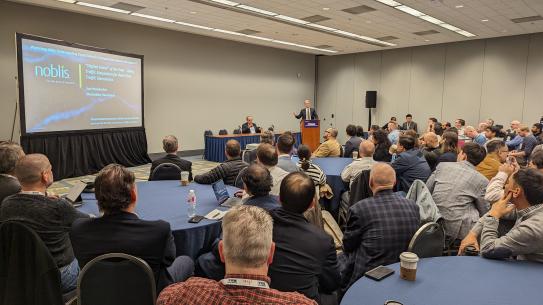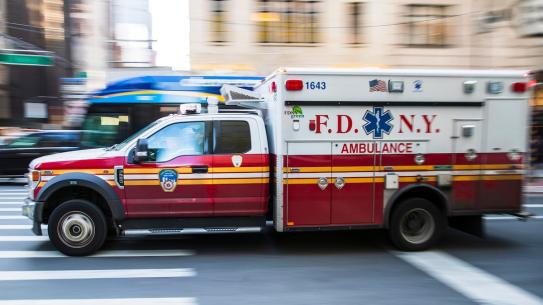Joseph Chow
,
Ph.D., PE
-
Institute Associate Professor
-
Deputy Director of C2SMART Center
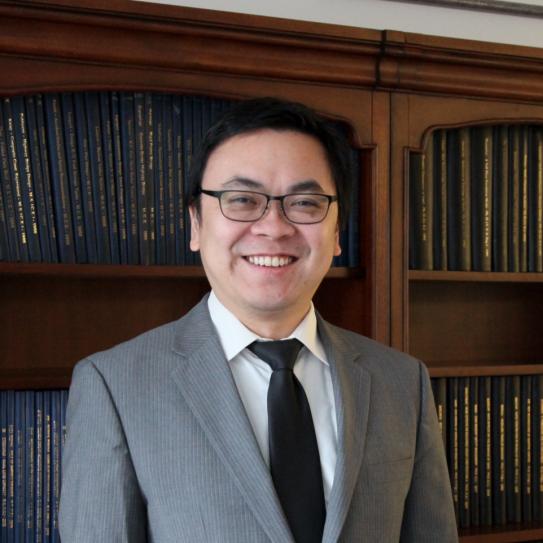
Dr. Joseph Chow is an Institute Associate Professor in the Department of Civil & Urban Engineering and the Deputy Director at the C2SMART Center at NYU, and heads BUILT@NYU: the Behavioral Urban Informatics, Logistics, and Transport Laboratory. His research expertise lies in transportation systems, with emphasis on multimodal networks, behavioral urban logistics, smart cities, and transport economics. He is an NSF CAREER award recipient; he is a former elected Chair of the Urban Transportation SIG and appointed TSL Cluster Chair at INFORMS Transportation Science & Logistics Society, former chair of the TRB subcommittee on Route Choice and Spatiotemporal Behavior, and is an Associate Editor for Transportation Research Part C, INFORMS Service Science, and Transportation Research Record, and Editorial Board Editor for Transportation Research Part B. At NYU he is an Associated Faculty at CUSP, Rudin Center, Sustainable Engineering Initiative, and an Affiliated Faculty member of NYU-KAIST. As of 2025, Dr. Chow was in career-wide Top 2% of scientists worldwide in the area of Transportation & Logistics. His research was featured among the 50 greatest innovations in 2024 by Popular Science. Prior to NYU, Dr. Chow was the Canada Research Chair in Transportation Systems Engineering at Ryerson University. From 2010 to 2012, he was a Lecturer at University of Southern California and a Postdoctoral Scholar at UC Irvine. He obtained a Ph.D. in Transportation Engineering from UC Irvine (‘10), and an M.Eng. (‘01) and B.S. (‘00) in Civil Engineering from Cornell University with a minor in Applied Math. Dr. Chow is a former Eisenhower and Eno Fellow and a licensed PE in NY.
Education
Cornell University
Bachelor of Science, Civil Engineering, 2000
Cornell University
Master of Engineering, Civil Engineering, 2001
University of California, Irvine
Doctor of Philosophy, Civil Engineering, 2010
Experience
University of Southern California
Lecturer/Instructor
Epstein Department of Industrial and Systems Engineering Sol Price School of Public Policy
From: May 2010 to May 2012
University of California, Irvine
Postdoctoral Scholar
Institute of Transportation Studies
From: April 2010 to May 2012
Ryerson University
Canada Research Chair and Assistant Professor
Department of Civil Engineering
From: June 2012 to August 2015
New York University
Assistant Professor
Department of Civil & Urban Engineering
From: September 2015 to present
Publications
Journal Articles
ORCID: 0000-0002-6471-3419
Select articles:
1) Sayarshad, H.R., Chow, J.Y.J., 2017. Non-myopic relocation of idle mobility-on-demand vehicles as a dynamic location-allocation-queueing problem. Transportation Research Part E 106, 60-77.
2) Ma, Z., Urbanek, M., Pardo, M.A., Chow, J.Y.J., Lai, X., 2017. Spatial welfare effects of shared taxi operating policies for first mile airport access, International Journal of Transportation Science and Technology, in press, doi: 10.1016/j.ijtst.2017.07.001.
3) Djavadian, S., Chow, J.Y.J., 2017. An agent-based day-to-day adjustment process for modeling ‘Mobility as a Service’ for a two-sided flexible transport market, Transportation Research Part B, 104, 36-57.
4) Guo, Q.W., Chow, J.Y.J., Schonfeld, P., 2017. Stochastic dynamic switching in fixed and flexible transit services as market entry-exit real options. Transportation Research Part C, Special issue on ISTTT 22, accepted for publication.
5) Mendes, L.M., Bennàssar, M.R., Chow, J.Y.J., 2017. Simulation experiment to compare light rail streetcar against shared autonomous vehicle fleet for Brooklyn Queens Connector. Transportation Research Record, in press, doi: 10.3141/2650-17.
Other Publications
Book Chapters:
1) Chow, J.Y.J., Jayakrishnan, R., Mahmassani, H.S., 2013. Is transport modeling education too multidisciplinary? A manifesto on the search for its evolving identity. Travel Behaviour Research: Current Foundations, Future Prospect, eds. E.J. Miller and M.J. Roorda, Lulu Publishing.
Grants
CAREER: Urban Transport Network Design with Privacy-Aware Agent Learning, (Principal Investigator)
National Science Foundation, 2017 - 2022
Stable Matching of Service Tours to Design Cooperative Policies for Transport Infrastructure Systems, (Principal Investigator)
NSF, 2016 - 2019
Design of Smarter Urban Logistics Systems, (Principal Investigator)
Canada Research Chairs Program, 2013 - 2016
Multimodal Systems Design with Network Interactions, (Principal Investigator)
NSERC, 2013 - 2016
Development of mobile device-based surrogate systems for connected and autonomous vehicle technologies, (Principal Investigator)
NSERC, OCE, 2015
Agent-based decision support system for a flexible transit service pilot, (Principal Investigator)
NSERC, 2015
Affiliations
- Associated Faculty, NYU Center for Urban Science & Progress
- Vice Chair, INFORMS TSL Society, Urban Transportation SIG
- Member, Editorial Advisory Board for Transportation Research Part B from Elsevier
- Co-Chair, TRB Subcommittee on Freight Modeling
- Member, TRB Committee on Transportation Network Modeling
- Member, World Conference on Transport Research, Freight Transport Modelling SIG
Information for Mentees
About Me: Local NYer, studied in California, taught briefly in Toronto, up for coffee/tea chats
Research News
Synthetic data holds the key to determining best statewide transit investments
Synthetically generated population data can reveal the equity impacts of distributing transportation resources and funding across diverse regions, according to new research from NYU's Tandon School of Engineering that uses New York State as a case study.
Relying on an artificial dataset representing 19.5 million New York residents and over 120,000 modeled origin-destination trips, researchers from NYU Tandon's C2SMARTER, a Tier 1 U.S U.S. Department of Transportation-funded University Transportation Center, determined how best to invest in transportation services when equitable benefits are an objective.
They presented the findings in a paper published in Transportation Research Part D: Transport and Environment.
"Policymakers often use surveys to allocate transportation resources, but these surveys frequently underrepresent low-income and marginalized communities," said Joseph Chow, Institute Associate Professor of Civil and Urban Engineering, who led the study. "We developed a completely new approach for transportation planning, showing that synthetic data can consistently assess equity impacts across large regions like New York State. Our statewide model parameters are available to any agency to study the multiple effects of new service designs, something previously impossible."
The research team developed what they call an "equity-aware choice-based decision support tool.”
Given a budget level, the proposed tool selects optimal service regions for one or two new mobility services considering four objectives: (1) maximizing total revenue, (2) maximizing total increased consumer surplus, meaning delivering consumers cost savings (3) minimizing consumer surplus disparity, meaning making the benefits fair between different groups and (4) minimizing consumer surplus insufficiency, meaning ensuring baseline benefits even in areas that are less profitable.
The first two objectives focus on making the transportation system more efficient and profitable overall. The last two objectives emphasize making sure the benefits are distributed more equitably among different consumer groups and regions.
Using the tool with New York State synthetic data, researchers focused on two hypothetical mobility services: ride-hailing services that offer shorter travel times but higher trip fares, and on-demand microtransit services that provide longer travel times with lower trip fares. The results showed that:
- Investing mostly in ride-hailing services, focusing on longer trips in metropolitan areas like New York City, maximized revenue.
- Also prioritizing ride-hailing services but covering shorter trips in metropolitan areas maximized consumer surplus.
- Investing mainly in on-demand microtransit service, targeting disadvantaged communities, minimized consumer surplus disparity,
- Splitting the budget between ride-hailing and microtransit services, covering both urban and rural areas, balanced equity and efficiency,
"Microtransit played an outsized role boosting equity, proving more viable in disadvantaged areas. But it needed subsidies to offset lower productivity than ride-hailing,” said Chow, who is also Deputy Director of C2SMARTER. “We hope this study is a step towards creating a way to analyze and allocate transportation resources nationally, to produce equitable outcomes throughout the U.S.
Replica, a transportation data and analytics firm, provided the synthetic data for the study. The dataset combines real mobility, demographic, and built environment information with mathematical models, providing details like travel demand patterns, transportation network characteristics, and mode choices for a given region.
"The work Dr. Chow and the team at NYU Tandon are doing is precisely what we had in mind when making Replica data available," said Robert Regué, Director of Research and Development at Replica. "We believe synthetic data is the key to taking a more data driven approach to creating more equitable, sustainable, and economically resilient cities, while protecting personal privacy. We are always excited to see our data contribute to such thoughtful, impactful research."
Along with Chow, the paper’s authors are NYU Tandon PhD candidate Xiyuan Ren and ChengHe Guan, Assistant Professor of Urban Science and Policy at NYU Shanghai and Global Network Assistant Professor at NYU. The researchers received funding support from C2SMARTER (U.S. Department of Transportation).
Xiyuan Ren, Joseph Y.J. Chow, ChengHe Guan, Mobility service design with equity-aware choice-based decision-support tool: New York case study, Transportation Research Part D: Transport and Environment, Volume 132, 2024, 104255, ISSN 1361-9209,
Breakthrough study proposes enhanced algorithm for ride-pooling services
In the ever-evolving landscape of urban transportation, ride-pooling services have emerged as a promising solution, offering a shared mobility experience that is both cost-effective and environmentally friendly. However, optimizing these services to achieve high ridership while maintaining efficiency has remained a challenge. A new study by NYU Trandon transportation experts proposes a novel algorithm aimed at revolutionizing the way ride-pooling services operate.
Led by Joseph Chow, Institute Associate Professor of Civil and Urban Engineering and Deputy Director of the USDOT Tier 1 University Transportation Center C2SMARTER, the study delves into the intricacies of dynamic routing in ride-pooling services, with a particular focus on the integration of transfers within the system. Transfers, the process of passengers switching between vehicles during their journey, have long been identified as a potential strategy to enhance service availability and fleet efficiency. Yet, the implementation of transfers poses a highly complex routing problem, one that has largely been overlooked in existing literature.
The research team's solution comes in the form of a state-of-the-art dynamic routing algorithm, designed to incorporate synchronized intramodal transfers seamlessly into the ride-pooling experience. Unlike traditional approaches that focus solely on immediate decisions, the proposed algorithm adopts a forward-looking perspective, taking into account the long-term implications of routing choices.
Central to the study is the development of a simulation platform, allowing researchers to implement and test their proposed algorithm in real-world scenarios. Drawing on data from both the Sioux Falls network and the MOIA ride-pooling service in Hamburg, Germany, the team evaluated the performance of their algorithm across various operational settings.
The results of the study are promising, suggesting that the incorporation of transfers into ride-pooling services using the proposed algorithm can lead to significant improvements in fleet utilization and service quality compared to transfers without it. By accounting for the additional opportunity costs of transfer commitments, the proposed algorithm demonstrates a competitive edge over traditional myopic approaches, reducing operating costs per passenger and minimizing the number of rejected ride requests.
While the findings represent a significant advancement in the field of urban transportation, the researchers acknowledge that further validation and refinement are necessary before widespread implementation. Nonetheless, the study marks a pivotal moment in the ongoing quest to optimize ride-pooling services for the cities of tomorrow.
In summary, the contributions of the research can be categorized into three main areas:
1. Development of an innovative online policy and algorithm for operating ride-pooling services with en-route transfers.
2. Identification and integration of a previously overlooked dimension in transfer decisions, leading to a more comprehensive cost function approximation model.
3. Conducting a rigorous simulation-based experiment, utilizing real-world data to compare various operational strategies and validate the effectiveness of the proposed algorithm.
As cities continue to grapple with the challenges of urban mobility, studies like this offer a beacon of hope, paving the way for more efficient, sustainable, and accessible transportation systems.
This research was supported by MOIA.
Namdarpour, F., Liu, B., Kuehnel, N., Zwick, F., & Chow, J. Y. J. (2024). On non-myopic internal transfers in large-scale ride-pooling systems. Transportation Research Part C: Emerging Technologies, 162, 104597. https://doi.org/10.1016/j.trc.2024.104597
A large-scale analytical residential parcel delivery model evaluating greenhouse gas emissions, COVID-19 impact, and cargo bikes
The e-commerce industry, which has seen remarkable growth over the past decade, experienced an even more accelerated surge in the wake of the COVID-19 pandemic. This exponential rise in online shopping has triggered a corresponding boom in the parcel delivery sector. However, a glaring gap exists in our understanding of the extensive social and environmental repercussions of this burgeoning industry.
To bridge this knowledge void, researchers at NYU Tandon led by Joseph Chow, Institute Associate Professor of Civil and Urban Engineering and Deputy Director of the C2SMARTER University Transportation Center, have proposed a comprehensive model to scrutinize the multifaceted impacts stemming from the parcel delivery surge. The model's architecture incorporates a parcel generation process, ingeniously converting publicly available data into precise figures detailing parcel volumes and delivery destinations. Additionally, a sophisticated continuous approximation model has been meticulously calibrated to gauge the lengths of parcel service routes.
The veracity of this model was subjected to rigorous examination through a real-world case study, employing a trove of data from the labyrinthine streets of New York City. Impressively, the parcel generation process demonstrated an impressive degree of fidelity to the actual data. Even more striking were the high R2 values, consistently hovering at 98% or greater, characterizing the model's ability to approximate reality. Validation of the model's output was further solidified by comparing it against the tangible UPS truck journeys.
Applying this model to the year 2021, it emerged that residential parcel deliveries in NYC constituted 0.05% of the total daily vehicle-kilometers traveled (VKT), equivalent to a staggering 14.4 metric tons of carbon emissions per day. The COVID-19 pandemic substantially contributed to a surge in parcel deliveries, culminating in an alarming annual greenhouse gas (GHG) emissions figure of 1064.3 metric tons of carbon equivalent (MTCE) within the city's boundaries. To put this in perspective, this is sufficient to power the homes of 532 standard US households for an entire year.
A ray of hope emerges in the form of NYC's existing bike lane infrastructure, which has the capacity to seamlessly replace 17% of parcel deliveries with eco-friendly cargo bikes, thereby precipitating an 11% reduction in VKT. By strategically augmenting this infrastructure with 3 kilometers of bike lanes connecting Amazon facilities, the cargo bike substitution benefit skyrockets from 5% to an impressive 30% reduction in VKT. The prospect becomes even more promising with the construction of an additional 28 kilometers of bike lanes citywide, potentially pushing parcel delivery substitution via cargo bikes from 17% to a remarkable 34%, concurrently saving an extra 2.3 MTCE per day.
Notably, the prioritization of cargo bike deployments holds the potential to disproportionately benefit lower-income neighborhoods, including but not limited to Harlem, Sunset Park, and Bushwick, by substantially curtailing GHG emissions in these communities.
Hai Yang, Hector Landes, Joseph Y.J. Chow, "A large-scale analytical residential parcel delivery model evaluating greenhouse gas emissions, COVID-19 impact, and cargo bikes," International Journal of Transportation Science and Technology, 2023, ISSN 2046-0430.
New mathematical model optimizes modular vehicle fleet routes
Researchers at NYU Tandon School of Engineering’s C2SMART Center have developed an algorithm to plan the most efficient routes for modular vehicle (MV) fleets — specially-designed vehicles that attach and detach from one another as they move people around cities — removing a significant obstacle to making this type of transportation system a reality.
In a paper published in Transportation Research Part C: Emerging Technologies, the researchers employ a mathematical model called MILP (Mixed Integer Linear Programming) to optimize the service time for the passengers and the travel cost for the vehicles in an MV system. The model factors in passenger pickups and deliveries, en-route transfers, and variable capacity of the MVs to identify the best routes and schedules for the attachments and separations of the vehicles.
Conventional mass transit and demand-responsive transportation systems can face challenges accommodating fluctuations in traveler demand, leading to long travel times, energy inefficiencies, traffic congestion and financial waste.
Low-capacity vehicles like vans may be slow and overcrowded in peak times. High-capacity vehicles like buses may be largely unoccupied when demand is low. On-demand services like paratransit often deliver only one passenger at a time, making them expensive to operate.
MVs offer a flexible and efficient alternative. The independent vehicles in MV fleets can connect while in motion, creating platoons that travel as one unit until the vehicles detach. According to research lead Joseph Chow, Institute Associate Professor in the Department of Civil & Urban Engineering and the Deputy Director of C2SMART, MVs can move people faster, with less energy consumption and operational expenses than many conventional systems.
“MVs offer a promising alternative to move people more efficiently in certain situations,” said Chow, who collaborated on the research with NYU Tandon Ph.D. student Zhexi Fu. “Imagine, for instance, employees at the same company. The individual vehicles could pick up people who live within similar enclaves, and join together in a platoon to deliver the entire group to its workplace. MVs also have significant potential to improve on-demand transportation that delivers people door-to-door, including those that serve people with disabilities.”
Currently, no city has an MV system in use, although Next Transportation Systems is piloting a MV test in Dubai now. According to Chow, the inability to track and route MV fleets has been a significant roadblock to potential real-world adoption. To build its routing model, the C2SMART team used the Anaheim network, a traffic simulation of Anaheim, California.
The research on MV routing is the latest in a long series of studies Chow has conducted around urban mobility. Among his previous studies include examinations of Dial-a-Ride programs, e-scooter usage, and urban bus networks. Chow’s new research also advances the mission of C2SMART, a U.S. Department of Transportation (US DOT) Tier 1 University Transportation Center (UTC) designated to address the US DOT priority area of Congestion Reduction.


